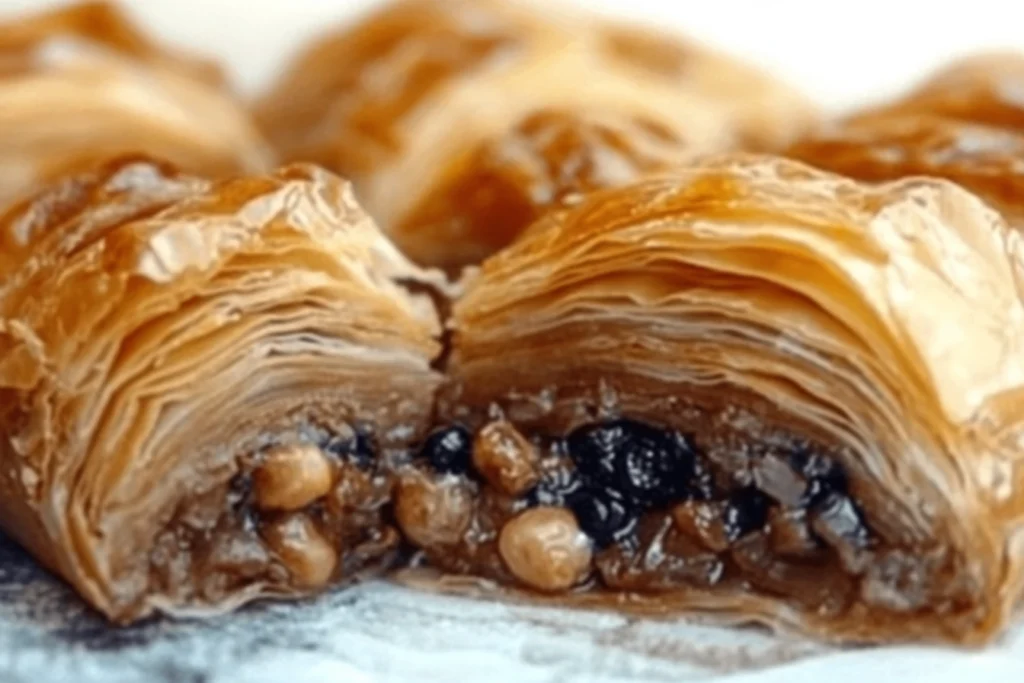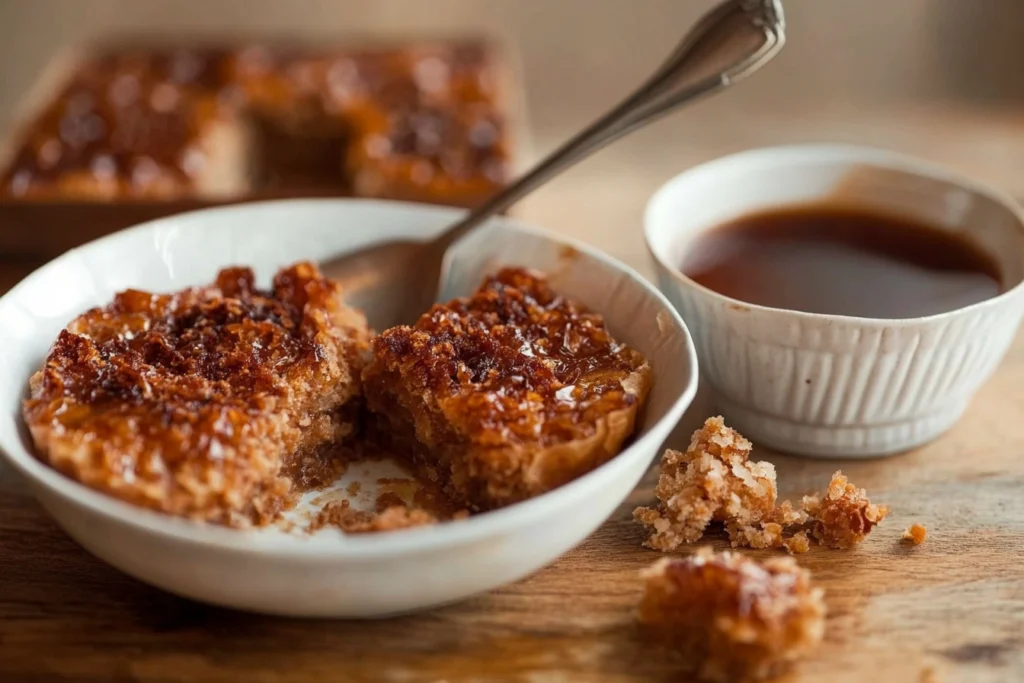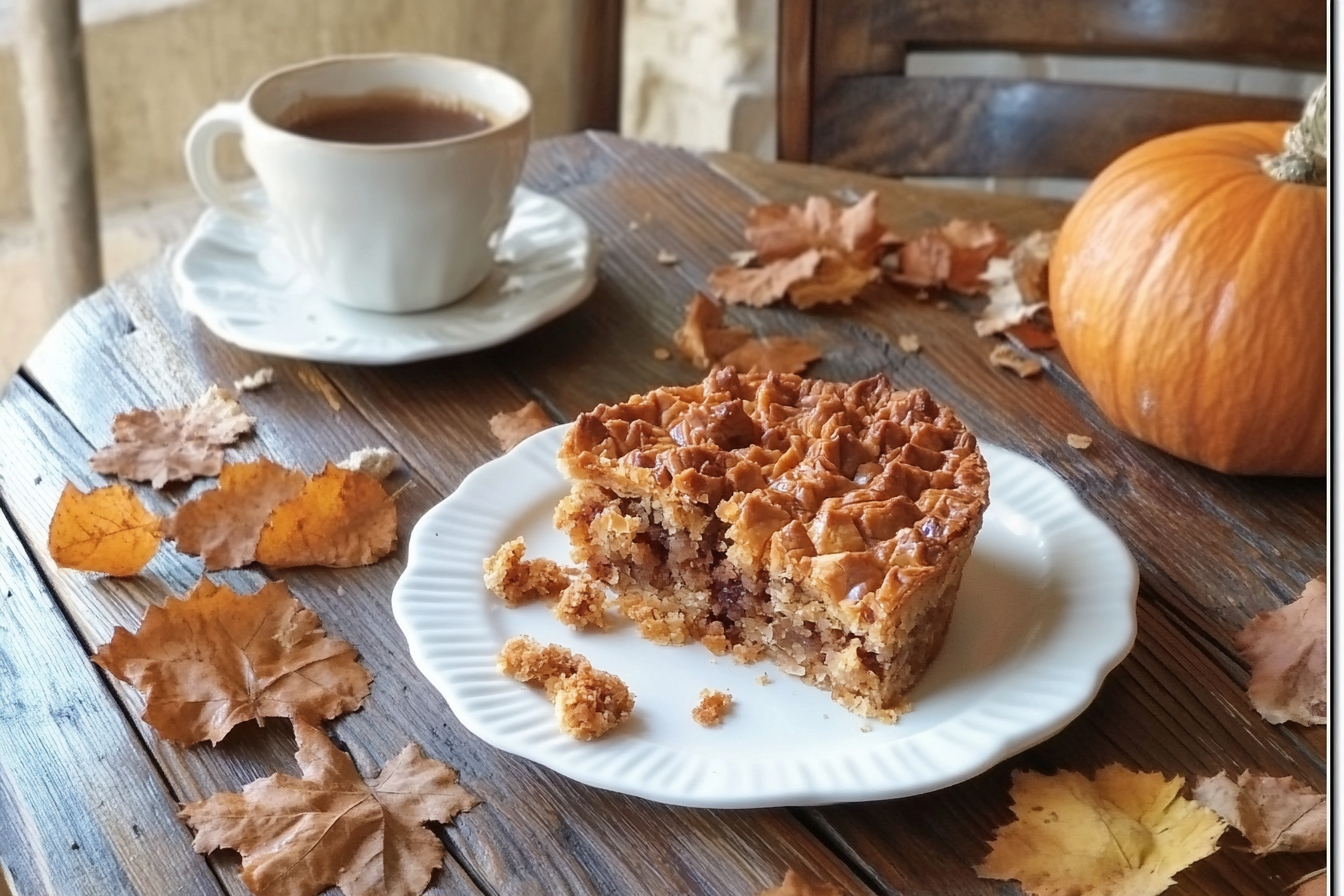Part 1: Understanding Greek Baklava recipe
H1: Introduction to Greek Baklava recipe
Greek baklava recipe is a dessert synonymous with indulgence and history. This rich, flaky, and syrupy treat is crafted from delicate layers of phyllo dough, finely chopped nuts, and a sweet, spiced syrup that ties everything together.
Its origins are often debated, with many tracing it back to the Ottoman Empire. Greeks have since embraced and elevated baklava, incorporating their unique flavors like honey and walnuts into this beloved dish. It’s more than just a dessert—it’s a testament to Greek culinary mastery and cultural pride.
H2: Cultural Significance
Baklava recipe plays a prominent role in Greek traditions, often gracing the tables during festive celebrations such as Easter, Christmas, and weddings. In these moments, the act of preparing and sharing baklava becomes symbolic of hospitality and familial love.
Across the Mediterranean, variations abound:
- Turkish baklava often emphasizes pistachios and a delicate sugar syrup.
- Middle Eastern versions might incorporate rosewater or orange blossom for floral notes.
- Greek baklava stands out for its honey-based syrup, which adds depth and richness to the dish.
These variations not only highlight regional tastes but also underscore how deeply rooted baklava is in the shared culinary history of these regions.
H2: Key Ingredients
Creating authentic Greek baklava requires attention to its core components:
- Nuts: A mixture of walnuts, pistachios, or almonds is common, with walnuts being the traditional Greek choice.
- Phyllo Dough: This paper-thin pastry can be homemade for an extra challenge or store-bought for convenience. Each sheet must be handled delicately to prevent tearing.
- Syrups and Sweeteners: A mixture of honey, sugar, and sometimes lemon juice or spices like cinnamon ensures a perfectly balanced sweetness.
H3: Selecting the Right Tools
The success of baklava lies not just in ingredients but also in having the right tools. Here’s what you’ll need:
- A baking tray large enough to accommodate the phyllo layers.
- A pastry brush to evenly distribute melted butter.
- A sharp knife to cut clean, precise layers.
- A saucepan for preparing the syrup.
Investing in quality tools can make the process smoother and the results more professional.

H3: Prepping the Ingredients
Preparation is key to achieving the perfect baklava texture and flavor:
- Chopping the Nuts: A coarse chop ensures the nuts retain their crunch without overpowering the phyllo layers.
- Phyllo Sheets: Cover the dough with a damp cloth to prevent it from drying out while layering.
Proper preparation makes assembling the dessert seamless and enjoyable.
H4: Essential Tips Before Starting
Making baklava is as much about technique as it is about the ingredients:
- Keep the Phyllo Moist: Work quickly and cover unused sheets to maintain their pliability.
- Balance Flavors: Adjust the sweetness of the syrup to complement, not overpower, the nutty layers.
A balance of textures—crisp phyllo and tender syrup-soaked layers—is the hallmark of a great baklava.
H4: Authentic vs. Modern Recipes
Traditional Greek baklava relies on simple yet robust flavors: walnuts, honey, and warm spices. However, modern takes on this classic dessert include innovations such as:
- Chocolate-drizzled baklava.
- Nut blends featuring hazelnuts or macadamias.
- Vegan versions using margarine and agave syrup.
These adaptations ensure that baklava remains relevant to contemporary palates while respecting its rich heritage.
H5: Nutritional Profile of Baklava
Baklava, though decadent, can fit into a balanced diet when enjoyed in moderation. Here’s a quick breakdown:
- Calories: A typical piece of baklava contains about 250-300 calories.
- Fats: Healthy fats from nuts.
- Sugars: Primarily from honey and syrup.
For a healthier twist:
- Reduce the syrup quantity.
- Use less butter between layers.
- Experiment with natural sweeteners.
H5: Regional Variations in Baklava
While the Greek version emphasizes walnuts and honey, neighboring countries have their distinct touches:
- Turkish Baklava: Layers pistachios with lighter syrup.
- Lebanese Baklava: Often infused with rose or orange blossom water.
- Greek Baklava: Balances the earthiness of walnuts with the natural sweetness of honey.
Each variation offers a unique perspective on this shared culinary treasure.
H6: The Role of Baklava in Greek Cuisine
Baklava isn’t just a dessert; it’s a symbol of Greek hospitality. Offering a piece of baklava to a guest signifies warmth and generosity. During holidays and celebrations, its presence elevates the occasion, embodying the essence of Greek cuisine: simple yet profound flavors, shared with love.
Part 2: Step-by-Step Preparation of Greek Baklava
H1: Preparing the Phyllo Dough
The phyllo dough is the backbone of a great baklava. Its thin, crisp layers hold the rich flavors together. Here are key tips for handling this delicate pastry:
- Work Quickly: Phyllo dries out fast. Cover unused sheets with a damp cloth or plastic wrap while assembling.
- Thaw Properly: If using frozen phyllo, allow it to thaw in the refrigerator overnight. Attempting to work with semi-frozen dough can cause tearing.
- Handle Gently: Phyllo tears easily, but small imperfections won’t ruin the dessert. Focus on even layering for a balanced texture.
Layering the dough is an art:
- Brush each sheet with melted butter, ensuring even coverage.
- Stack several sheets to form the base before adding the nut filling.
Patience and precision here set the stage for a flaky, golden masterpiece.
H2: Preparing the Nut Filling
The filling provides the nutty richness that contrasts beautifully with the phyllo. Follow these steps to create the perfect blend:
- Chopping the Nuts: Use a food processor for efficiency, but stop before the nuts become too fine. You want a slightly coarse texture for a satisfying crunch.
- Seasoning: Add cinnamon and a pinch of ground cloves or nutmeg to enhance the warmth of the filling. Optionally, mix in sugar for added sweetness.
To ensure consistency:
- Stir the nut mixture thoroughly before sprinkling it between the phyllo layers.
- Use a measuring cup to evenly distribute the filling across layers.
H2: Assembling the Layers
The assembly process is where baklava takes shape:
- Create a Strong Base: Begin with 8-10 sheets of phyllo, buttering each layer generously.
- Add Nut Layers: After the base, sprinkle a thin, even layer of nuts, then top with 2-3 more phyllo sheets. Repeat until the nuts are used.
- Finish with Phyllo: Cap the dessert with another 8-10 sheets of phyllo for a crisp and sturdy top.
A well-assembled baklava ensures the syrup will soak evenly, yielding a cohesive, flavorful result.
H3: Cutting the Baklava
Before baking, cutting the baklava into the traditional diamond shapes is crucial. A few tips for achieving clean cuts:
- Use a Sharp Knife: A dull blade will tug at the layers, causing uneven edges.
- Cut Deeply: Ensure the knife reaches through the layers but avoid cutting all the way to the bottom of the pan.
- Plan Your Cuts: Start by cutting parallel diagonal lines, then cross them to form diamonds.
Pre-cutting allows the syrup to penetrate fully after baking, ensuring every bite is flavorful.
H3: Baking the Baklava
The baking process transforms the layered creation into a golden, crispy dessert. Key tips:
- Temperature: Bake at 325°F (165°C) to prevent the phyllo from burning while ensuring even cooking.
- Timing: Bake for 45-60 minutes or until the top is golden brown.
To avoid underbaking:
- Rotate the tray halfway through for even heat distribution.
- Check the bottom layers by gently lifting a corner.
H4: Making the Syrup
The syrup is the finishing touch, binding the layers together and adding a signature sweetness. Here’s how to make it:
- Combine honey, sugar, and water in a saucepan. Bring to a boil.
- Add flavorings like lemon zest, cinnamon sticks, or a splash of rosewater.
- Simmer until slightly thickened, then let it cool.
The syrup’s consistency should be pourable but not too thin. It’s the lifeblood of the baklava, so get it right.
H4: Pouring the Syrup
Timing is everything when adding the syrup:
- Pour hot syrup over cold baklava or vice versa. This temperature contrast helps prevent sogginess.
- Use a ladle to distribute the syrup evenly over the cuts, ensuring it soaks into every layer.
Allow the baklava to sit for at least 4-6 hours to absorb the syrup fully before serving.

H5: Cooling and Serving
Cooling is as important as baking:
- Let the baklava rest uncovered at room temperature. This ensures the phyllo retains its crisp texture.
- Serve pieces with a garnish of crushed pistachios or a drizzle of melted chocolate for flair.
Pair with Greek coffee or a strong black tea to balance the dessert’s sweetness.
H5: Storing Baklava
Baklava can be made ahead and stored to maintain freshness:
- At Room Temperature: Store in an airtight container for up to a week.
- Freezing: Wrap individual pieces tightly in plastic wrap and place them in a freezer-safe bag. To reheat, thaw at room temperature and crisp in the oven for a few minutes.
Proper storage preserves its signature crunch and flavor.
H6: Troubleshooting Common Issues
Even seasoned baklava makers encounter challenges. Here’s how to address common problems:
- Soggy Baklava: Ensure proper syrup pouring technique and avoid over-soaking.
- Unevenly Baked Layers: Use a consistent oven temperature and rotate the tray.
- Tough Phyllo: Keep the phyllo moist during assembly, and use enough butter between layers.
Part 3: Enhancing Your Baklava Experience
H1: Adding Flavor Twists
Baklava’s versatility allows for creative variations to suit different tastes. While the traditional Greek recipe is beloved, these twists offer exciting alternatives:
- Chocolate Baklava: Add a layer of melted chocolate between the nut fillings or drizzle chocolate over the finished dessert.
- Fruit Infusion: Incorporate dried fruits like apricots, figs, or cranberries into the nut mixture for a tangy contrast.
- Nut Variations: Swap walnuts for cashews, macadamia nuts, or a mix of seeds for a unique texture.
By experimenting with flavors, you can create a personalized baklava recipe that’s perfect for any occasion.
H2: Healthier Baklava Options
For those seeking a lighter version of baklava, here are tips to reduce calories without compromising flavor:
- Reduce Syrup: Cut back on the syrup quantity and use honey as the sole sweetener.
- Use Olive Oil: Replace butter with extra virgin olive oil for a healthier fat alternative.
- Gluten-Free Options: Use gluten-free phyllo dough to make baklava accessible to those with dietary restrictions.
Health-conscious baklava is just as delightful, proving that indulgence doesn’t have to mean excess.
H2: Pairing Baklava with Other Foods
Baklava shines as a standalone dessert, but pairing it with complementary foods elevates the experience:
- Yogurt: Serve baklava with a dollop of thick Greek yogurt to balance its sweetness with creaminess.
- Ice Cream: Pair with vanilla or pistachio ice cream for a luxurious dessert platter.
- Beverages: Traditional Greek coffee, mint tea, or dessert wine like Moscato pairs beautifully with baklava’s rich flavors.
These pairings enhance baklava’s versatility, making it suitable for various settings, from casual gatherings to formal dinners.
H3: Baklava for Special Occasions
Baklava holds a special place in celebrations, and customizing it for specific events adds a personal touch:
- Holiday Themes: Use food coloring in the syrup or phyllo to match festive colors, such as red and green for Christmas.
- Wedding Baklava: Arrange baklava pieces in a tiered display, resembling a wedding cake.
- Individual Servings: Create mini baklava bites for easy serving at parties or buffets.
Tailoring baklava for special occasions makes it not only delicious but also memorable.
H3: Homemade vs. Store-Bought Baklava
While store-bought baklava offers convenience, homemade baklava often surpasses it in taste and quality. Here’s a comparison:
- Cost: Homemade baklava is generally more cost-effective, especially when made in large batches.
- Taste: Freshly baked baklava with customizable sweetness and nut blends always stands out.
- Effort: Although time-intensive, making baklava at home is a rewarding experience that allows for personal touches.
Homemade baklava fosters a deeper connection to the dessert’s rich tradition, making every bite even more satisfying.
H4: Exploring Baklava Recipes Worldwide
Baklava’s appeal transcends borders, with variations reflecting local flavors and traditions:
- Iranian Baklava: Uses cardamom and rosewater for a floral twist.
- Syrian Baklava: Incorporates orange blossom water for a citrusy aroma.
- Armenian Baklava: Includes spices like cloves and features a thicker syrup layer.
Exploring international baklava recipes broadens your appreciation for this dessert’s global significance.
H4: Creating a Baklava Gift Package
Baklava makes for an elegant and thoughtful gift. To create a memorable package:
- Presentation: Arrange pieces in a decorative tin or box lined with parchment paper.
- Pairing Treats: Include complementary items like Greek coffee, honey jars, or a recipe card.
- Customization: Add personal touches like a handwritten note or festive ribbon.
A baklava gift package is a perfect way to share this classic dessert and spread joy.
H5: Myths and Misconceptions
There are several myths surrounding baklava. Let’s debunk a few:
- “Baklava is always too sweet.” Properly balanced syrup prevents overwhelming sweetness.
- “It’s too difficult to make at home.” With practice and preparation, homemade baklava becomes manageable.
- “Baklava isn’t healthy.” While indulgent, baklava can be adjusted for dietary needs, such as reducing sugar or using alternative fats.
Understanding baklava’s flexibility dispels these misconceptions and encourages experimentation.
H5: Perfecting Your Technique Over Time
Mastering baklava takes practice, and learning from each attempt ensures improvement:
- Keep a Recipe Journal: Note the ratios, techniques, and outcomes for future reference.
- Experiment with Ingredients: Try different nut combinations or spices to refine the flavor profile.
- Seek Feedback: Share your baklava with friends and family for constructive insights.
With persistence, you’ll develop a baklava recipe that’s uniquely yours.
H6: Frequently Asked Questions (FAQs)
- How long does baklava last? Properly stored, baklava lasts up to a week at room temperature or three months in the freezer.
- Can baklava be made vegan? Yes, by using plant-based butter or oil and a vegan-friendly sweetener like agave syrup.
- What’s the best nut for baklava? Walnuts are traditional in Greek baklava, but pistachios and almonds are excellent alternatives.
- Why is my baklava soggy? Improper syrup application or over-soaking can lead to soggy layers.
- Can I use pre-chopped nuts? While convenient, freshly chopped nuts provide better texture and flavor.
- Is baklava gluten-free? Traditional baklava isn’t, but gluten-free phyllo dough is available for those with dietary restrictions.
- Can I make baklava ahead of time? Absolutely. Baklava tastes even better after resting for a day as the flavors meld.
- What’s the difference between Greek and Turkish baklava? Greek baklava uses honey-based syrup and walnuts, while Turkish baklava often emphasizes pistachios and sugar syrup.
- Can I reheat baklava? Yes, reheat in the oven for a few minutes to restore its crispness.
- What’s the ideal serving size? One to two pieces per person is perfect, as baklava is rich and filling.

